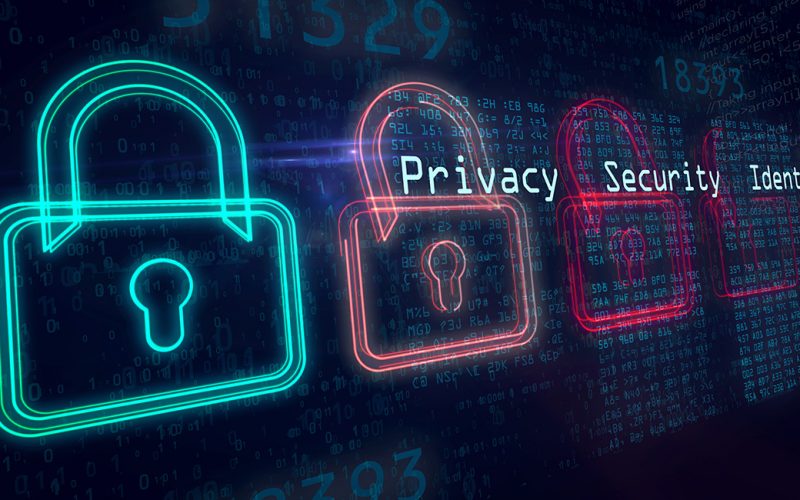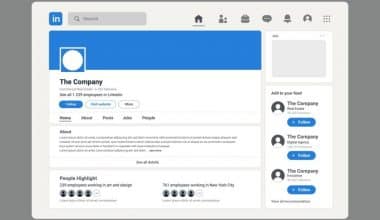In my early days of surfing the internet, I was struck by how interconnected and accessible everything was. But my delight quickly changed to fear when I learned how much personal information was being broadcast, frequently without people’s knowledge. This prompted me to understand and implement measures for protecting my digital privacy. In this post, I’ll provide ideas and practical strategies for protecting your personal information online, supported by data and my experiences. Whether you’re an experienced expert or just starting out in the digital world, these tips will help you preserve your privacy and secure your online presence.
What is Privacy?
It is useful to first understand privacy in general. “a: the quality or state of being apart from company or observation, b: freedom from unauthorized intrusion,” says Merriam-Webster about privacy. You can sing in the shower or dance about in your kitchen while making your morning coffee without being judged since you have privacy.
What is Digital Privacy?
Digital privacy entails safeguarding your personal information from illegal access, use, and disclosure. Maintaining digital privacy is critical in today’s interconnected society when our lives are increasingly spent online. From social media conversations to online banking, the amount of personal information we reveal is startling. According to a Pew Research Center survey, 81% of Americans believe they have little control over the data gathered by firms.
These types of data include:
- names
- addresses
- contact information
- bank details
- digital photographs
What are the Potential Challenges to Digital Privacy?
The internet is a hazardous place. There are two primary dangers to digital privacy: data breaches and personal data availability.
#1. Every day, data breaches reveal personal information
Data breaches are a common occurrence; the Verizon 2020 Data Breach Investigations Report analyzes approximately 4,000 intrusions. These instances can be massive, such as the Equifax hack, which compromised the personal information of more than half of the United States population. Alternatively, they can be extremely smaller, such as the hack of a Vermont chocolatier that exposed the personal information of 90 clients. Each breach, regardless of magnitude, exposes affected persons to identity theft and privacy violations.
#2. Data breaches fuel cyberattacks—for both consumers and companies
Cybercriminals profit from personal data. Trillions of usernames, passwords, personal information, and private documents are for sale on all levels of the Internet, including the surface, deep, and dark web. Criminals buy and exploit this information to steal someone’s identity or money, commit crimes in their name, and even start phishing or social engineering assaults on their job.
#3: Personal information is easily tracked, saved, aggregated, sold, and stolen
Another threat to digital privacy is how large firms like Facebook collect personal information. In addition to the information posted on personal sites, the corporation tracks everything a user Likes and Shares, as well as the Facebook groups we join, events we attend, and the location of images we post. Now that Facebook controls WhatsApp and Instagram, they can track us via those platforms as well.
#4: Big data aggregates personal data
Where things get really weird is when data is collected across several websites. Data brokers pull together personal information bit by bit to create extremely detailed profiles of millions of people, which they then sell to anyone who wants them.
Even when data is anonymized, advertisers can target consumers based on highly granular traits that may appear personal, such as religion, gaming habits, or even the possibility of becoming pregnant!
#5. Concerns about personal data privacy undermine consumer trust
Social media businesses would argue that they do not sell data directly; instead, they utilize it to connect consumers with advertisers—and that if we are going to receive online advertising, it should be relevant. There are two issues with the reasoning. First, stored data may be lost or stolen.
The second concern is that unscrupulous actors are now exploiting legitimate online advertising channels to carry out their schemes. Both exacerbate escalating customer privacy concerns, with an astounding 81% of consumers now stating that they must trust an enterprise before doing business with them.
Step-by-Step Guide for Protecting Your Personal Information
These steps are intended to assist you in developing a strong digital security strategy that will keep your personal information private and secure.
Step #1. Audit your online presence
Begin by doing a thorough review of your web presence. Google yourself to see what information pops up. Examine your social media profiles, blog articles, and any other online content featuring your name. This first step helps you determine what personal information is publicly available.
Example: When I first Googled myself, I discovered various obsolete social media profiles and remarks that did not match my current professional image. Cleaning these up was the first step toward having a more polished web presence.
Step #2. Enhance Your Privacy Settings
Adjust your privacy settings on social media and other sites to limit who can see your data. Ensure that personal information is only visible to trustworthy contacts. This reduces the quantity of personal information available to the public and possible cybercriminals.
How to do it:
- Use Facebook’s privacy settings to control who can view your posts, friend list, and personal information.
- On LinkedIn, you have control over who sees your relationships and activity updates.
- To maintain control, you should review and adjust your privacy settings regularly.
Step #3. Use Strong, Unique Passwords
Creating secure and unique passwords for all of your online accounts is an important step toward securing your digital privacy. Avoid using readily guessed passwords and instead use a password manager to keep track of them. Password managers generate complicated passwords and keep them secure.
Example: I switched to a password manager that generates and maintains complicated passwords for all of my accounts, which greatly improved my online security.
Step #4. Enable Two-Factor Authentication (2FA)
Two-factor authentication adds an extra degree of security to your online accounts by demanding a second form of verification alongside your password. This might be a code delivered to your phone or an authentication app.
According to Microsoft, implementing 2FA can prevent up to 99.9% of automated cyberattacks.
Step #5. Be wary of phishing scams
Phishing scams are attempts to fool you into supplying personal information by impersonating a reputable source. Be careful of unsolicited emails, messages, or phone calls requesting personal information.
Tips to Avoid Phishing Scams:
- Verify the sender’s email address.
- Avoid clicking on any dodgy links.
- Implement anti-phishing tools and software.
Step #6. Limit Data Sharing on Public Wi-Fi
Public Wi-Fi networks are frequently less secure, making it easier for hackers to access your information. Avoid using public Wi-Fi to access critical information, such as online banking.
Example: When using public Wi-Fi to connect to the internet, I utilize a virtual private network (VPN). A VPN encrypts my data, adding an extra degree of security.
Step #7. Update software and apps regularly
Keeping your software and apps up to date is critical for defending against security issues. Developers offer updates regularly to address security issues, so make sure you install them right away.
How to Do It:
- Enable automatic software and app upgrades.
- Check for updates regularly and apply them right away.
Step #8. Monitor Your Financial Statements
Regularly analyzing your financial statements can assist you in rapidly detecting any improper transactions. Report any unusual activity to your bank right away.
Example: After detecting a small, unusual charge on my credit card statement, I called my bank, which revealed fraudulent activity on my account.
Step #9. Educate Yourself on Privacy Laws
Understanding privacy rules will allow you to better protect your personal information. Familiarize yourself with regulations like Europe’s General Data Protection Regulation (GDPR) and the United States’ California Consumer Privacy Act (CCPA). These rules establish guidelines for how your data should be handled and safeguard against misuse.
How to Do It:
- Research GDPR and CCPA to understand your rights.
- Stay up to date on new privacy rules and regulations in your location.
By taking these actions, you may improve your digital privacy and protect your personal information from cyber-attacks. Taking proactive efforts to secure your online presence protects your data while also providing peace of mind in an increasingly digital age. What steps will you take today to increase your digital privacy?
Key takeaways
- Conduct frequent audits of your internet presence to discover and remove any obsolete or erroneous content.
- Customize your privacy settings on social media and other online platforms to limit who has access to your personal information.
- Protect your online accounts by creating strong, unique passwords and enabling two-factor authentication.
- Be aware of phishing scams and minimize data sharing on public Wi-Fi networks.
- Stay aware and protected by updating your software and apps regularly, monitoring your financial accounts, and learning about privacy regulations.
Digital Privacy Protection Template
A Digital Privacy Protection Template can help you secure your digital privacy. This form can assist you in thoroughly reviewing and improving your online security processes, ensuring that you cover all critical aspects of digital privacy.
Digital Privacy Protection Template
- Audit your online presence.
To improve your online presence, Google your name, review your social media pages and update any outdated information. - Improve Privacy Settings – Review and adjust social media privacy settings regularly.
- Use Strong Passwords.
To secure your accounts, use a password manager and create unique passwords for each. - Enable Two-Factor Authentication – Add 2FA to all accounts – Use authentication applications
- Be Wary About Phishing – Verify email senders and avoid clicking questionable links.
- Restrict Data Sharing on Public Wi-Fi – Use a VPN on public networks – Avoid viewing critical information.
- Update Software Regularly – Install updates immediately and enable automatic updates.
- Monitor the Financial Statements – Review statements regularly. Report any questionable behavior immediately.
- Educate on Privacy Laws – Understand GDPR and CCPA – Stay up-to-date on privacy regulations.
Digital Privacy Protection Template
Conclusion
In today’s digital world, keeping your personal information safe online is more crucial than ever. You may defend yourself from cyber-attacks while also maintaining control over your personal information by taking these measures and developing a strong digital privacy protection strategy. What steps are you going to take today to improve your digital privacy?
Related Articles
- 15 Free Digital Marketing Resources and Tools I Recommend in 2024
- 10 Practical Ways to Prevent Cyberbullying and Promote Online Safety
- How To Find Your Mugshot (And Remove It): A Legal Expert’s Step-by-Step Guide
- How to Find Pages Who Links to My Website? Best Free Ways
- Niching Down: A Guide to Finding Your Business’s Specialized Focus






